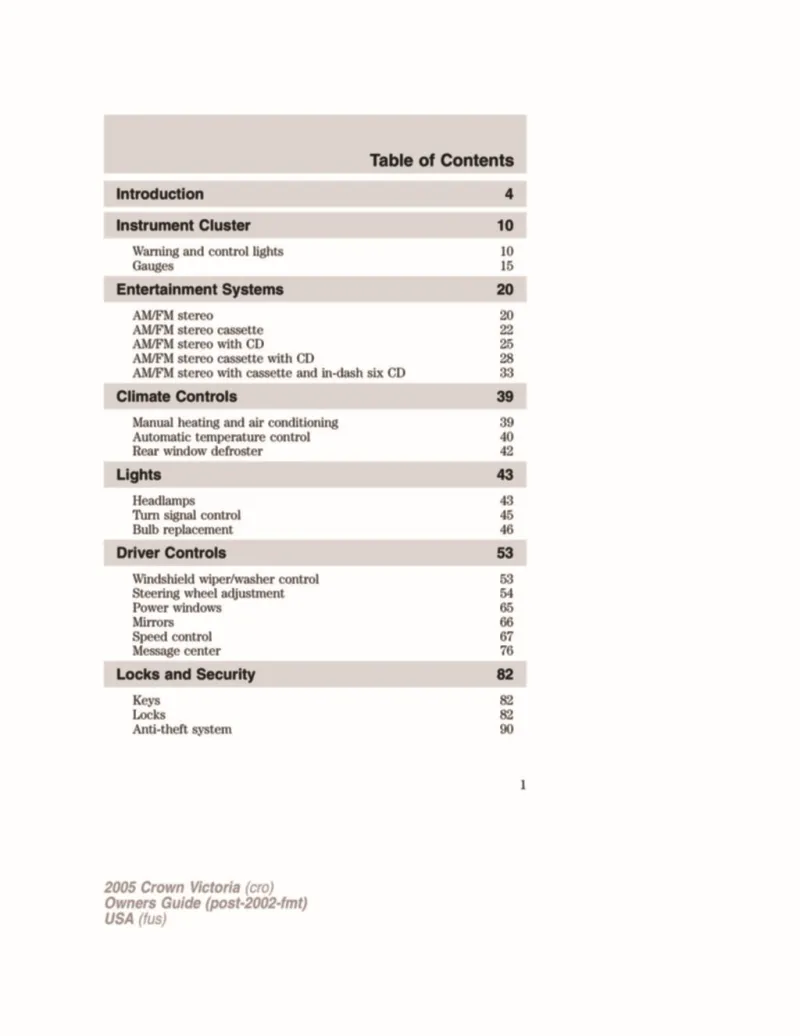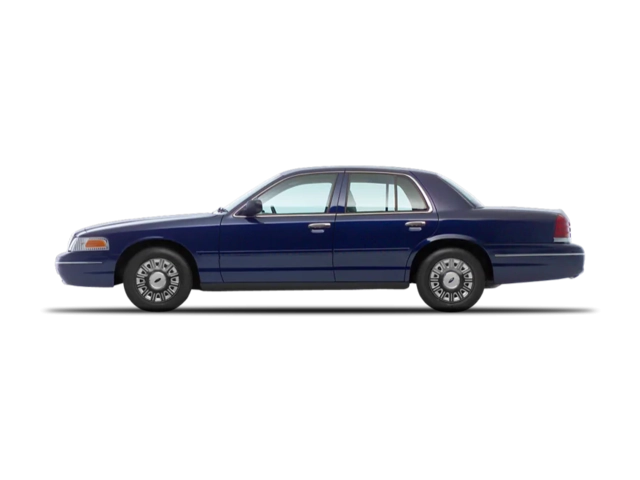2005 Ford Crown Victoria Owner's Manual

Table of Contents
2005 Ford Crown Victoria Overview
Introduction
The 2005 Ford Crown Victoria stands as a robust sedan that embodies the classic American car experience with its spacious interior, smooth ride, and powerful performance. Often recognized for its durability and reliability, this model has been a staple for both law enforcement and everyday drivers. With a design that boasts timeless elegance combined with modern features, the Crown Victoria continues to attract those who value comfort and functionality in their vehicles.
Powertrains
The 2005 Crown Victoria is powered by a formidable 4.6-liter V8 engine, delivering 250 horsepower and 305 lb-ft of torque. This powertrain is paired with a smooth-shifting 4-speed automatic transmission, ensuring a responsive and effortless driving experience. The rear-wheel-drive layout provides enhanced handling and an overall enjoyable ride, making it an ideal choice for those who enjoy highway cruising or city driving alike.
Trims
Features
Equipped with a range of features designed to enhance both comfort and safety, the 2005 Crown Victoria includes amenities such as air conditioning, keyless entry, a trip computer, and power windows and locks. Safety features include dual front airbags, anti-lock brakes, and traction control, ensuring peace of mind behind the wheel. Additionally, the spacious trunk provides ample cargo room, making it perfect for road trips or daily commuting.
Owner's Manual
The owner's manual of the 2005 Ford Crown Victoria serves as an invaluable resource, providing detailed information on maintenance schedules, operational guidelines, and troubleshooting tips. This comprehensive guide ensures that owners can make the most of their vehicle, offering insights into optimizing performance and enhancing the ownership experience. With easy-to-understand instructions and clear diagrams, it's an essential tool for every Crown Victoria enthusiast.
User manual download
The Ford Crown Victoria owner manual for the 2005 model year is to be found in PDF downloadable format on this page. The owner manual for the model year 2005 is free and in English, but the repair manuals are usually not easy to get and may cost more.
Manual Questions
Fill the form below and someone will help you!

